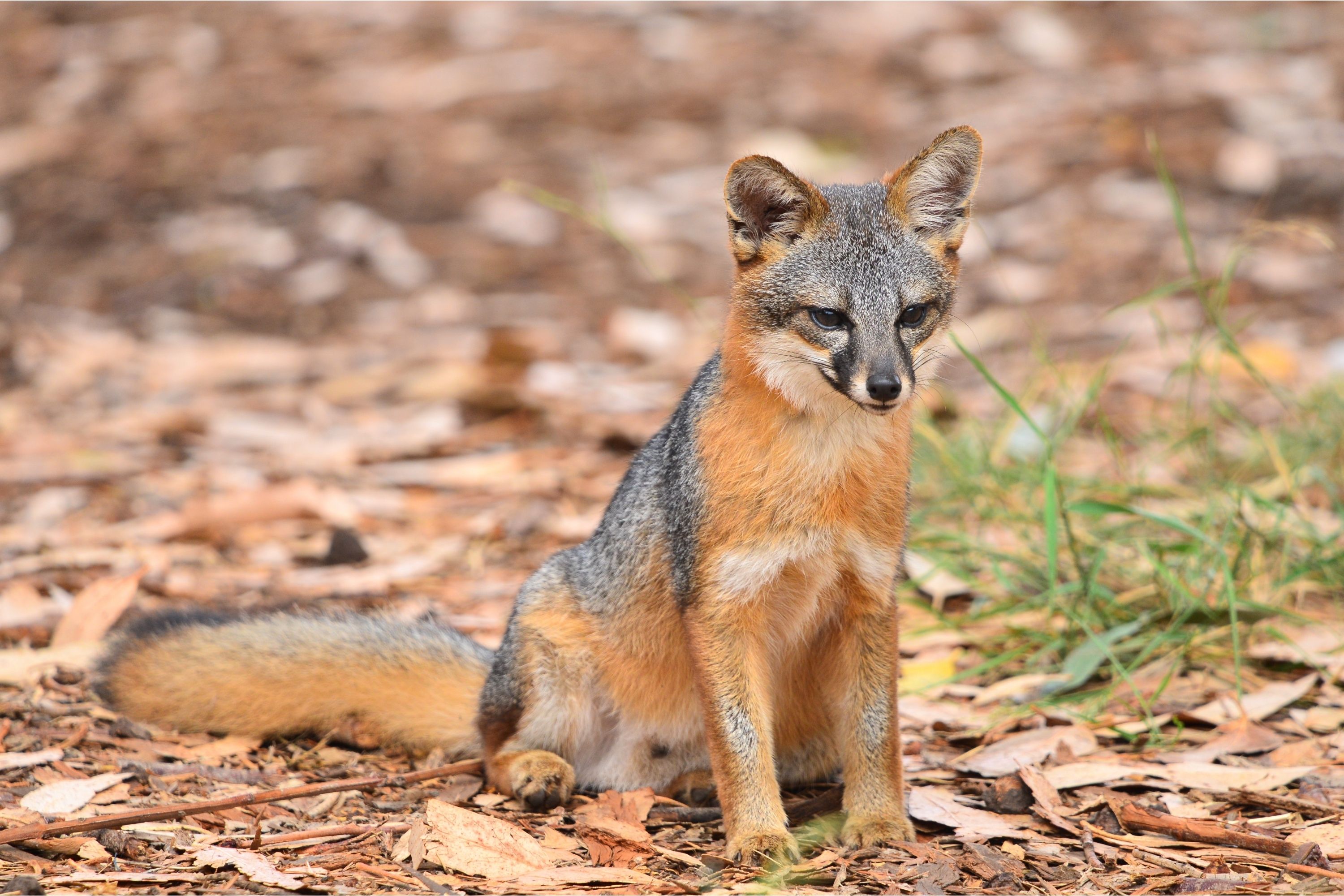Island fox
(Urocyon littoralis)

Description
The island fox (Urocyon littoralis) is a small fox that is endemic to six of the eight Channel Islands of California. There are six subspecies, each unique to the island it lives on, reflecting its evolutionary history. They are generally docile, show little fear of humans, and are easily tamed. Island foxes played an important role in the spiritual lives of native Channel Islanders. They have been likely semi-domesticated as pets, used as pelts, or for other functions, like pest control. The island fox is significantly smaller than the related gray fox, and is the smallest fox in North America, averaging slightly smaller than the swift (Vulpes velox) and kit foxes (Vulpes macrotis). Typically, the head-and-body length is 48–50 cm (19–19.5 in), shoulder height 12–15 cm (4.5–6 in), and the tail is 11–29 cm (4.5–11.5 in) long, which is notably shorter than the 27–44 cm (10.5–17.5 in) tail of the gray fox. This is due to the fact that the island fox generally has two fewer tail vertebrae than the gray fox. The island fox weighs between 1 and 2.8 kg (2.2 and 6.2 lb). The male is always larger than the female. The largest of the subspecies occurs on Santa Catalina Island and the smallest on Santa Cruz Island. The island fox has gray fur on its head, a ruddy red coloring on its sides, white fur on its belly, throat and the lower half of its face, and a black stripe on the dorsal surface of its tail. In general the coat is darker and duller hued than that of the gray fox. The island fox molts once a year between August and November. Before the first molt pups are woolly and have a generally darker coat than adult foxes. A brown phase, with the grey and black fur of the body replaced by a sandy brown and a deeper brown, may occur in the San Clemente Island and San Nicolas Island populations. It is unclear if this is a true color phase, a change that occurs with age, or possibly a change that occurs because of interactions with Opuntia cactus spines that become embedded in the pelt. The island fox typically forms monogamous breeding pairs, which are frequently seen together beginning in January and through the breeding season, from late February to early March. The gestation period is 50–63 days. The female island fox gives birth in a den, a typical litter having one to five pups, with an average of two or three. Pups are born in the spring and emerge from the den in early summer; the mother lactates for 7–9 weeks.
Taxonomic tree:







